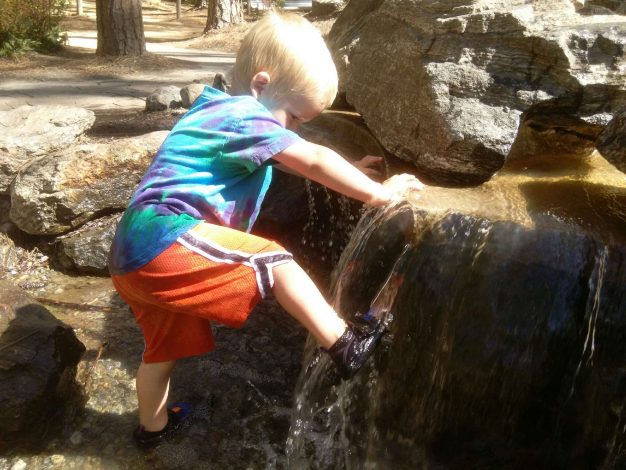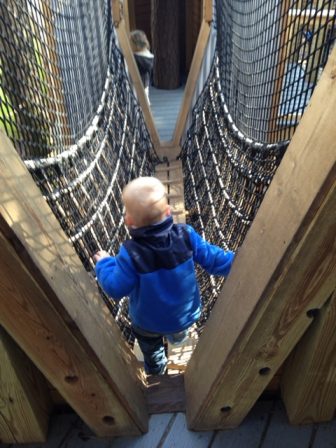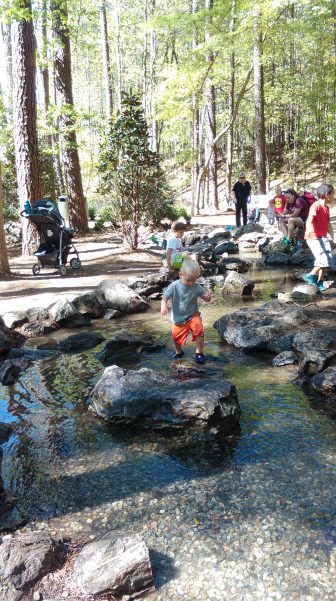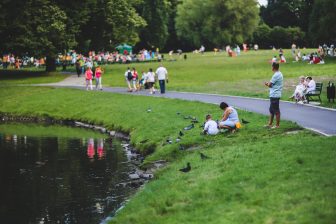
Children nature play takes new heights
Many science museums and zoological parks provide outdoor play spaces for their young visitors and families. The Museum of Life and Science in Durham, North Carolina provides an exemplary nature play space worth replicating elsewhere. Situated in the Raleigh-Durham metro area of North Carolina, with more than 2 million residents, the museum provides a butterfly house, interactive labs, dinosaur walk, and wildlife viewing area. Relatively new to the museum is the Hideaway Woods. This nature discovery zone is set in 2 acres of loblolly pine woods, with a treehouse village suspended nearly 20 feet in the air, a waterfall and play stream, a series of tree-suspended hammocks, and a “sweet-gum thicket” designed by artist Patrick Dougherty. Entry to the Hideaway Woods begins with a welcome quote from Margaret Atwood: “In the spring, at the end of the day, you should smell like dirt.” This signpost signals a new form of exploration at the museum, and a new approach for museums to promote children’s access to nature.
Hideaway Woods, which opened in 2015, provides opportunities for outdoor exploration, imagination, and nature play. The variety of physical structures invites many different types of active play; from climbing ropes in the treehouse to hide-and-seek in the thicket. The treehouse is a series of rope ladders and inter-connected houses, set high up in the loblolly pines. It has been likened to the Ewok villages in Star Wars, or the Treehouse in Tobago featured in the Swiss Family Robinson (Lindenfeld Hall 2015).
One parent called it an “oasis in the city,” (Museum of Life and Science, 2016). Another said that their child climbs and slides in ways she wouldn’t otherwise (Museum of Life and Science 2016). This was, indeed, the impetus for this addition to the museum – to provide an outdoor space where children could freely play, climb, and get muddy – experiencing nature in dynamic ways.
As in many cities, children in Raleigh-Durham spend less time playing in nature than previous generations. This has potential impacts on social and physical health. Hideaway Woods is an innovative way to provide nature play for many visitors. Some have already made it a favourite destination. Others may stumble upon this space by accident, and fall in love. While close-to-home green space is one of the most important ways to provide daily access to nature and its restorative qualities, institutions that promote learning about science and the environment might follow suit, providing innovative and artistic opportunities for children to delight in the natural world.

References
Lindenfeld Hall, Sarah. 2015. Hideaway Woods takes shape at Durham’s Museum of Life and Science. http://www.wral.com/treehouses-take-shape-at-durham-s-museum-of-life-and-science/14417208/
Museum of Life and Science. 2016. Hideaway Woods. http://www.lifeandscience.org/hideaway-woods
Author: Victoria Derr
Photo Credit: photo’s by Susan Carmichael Richards




